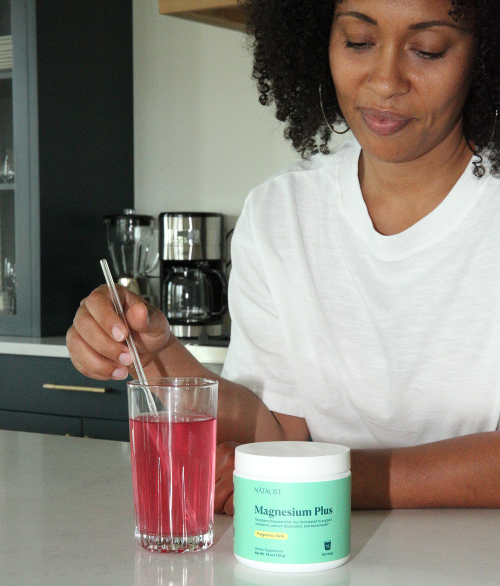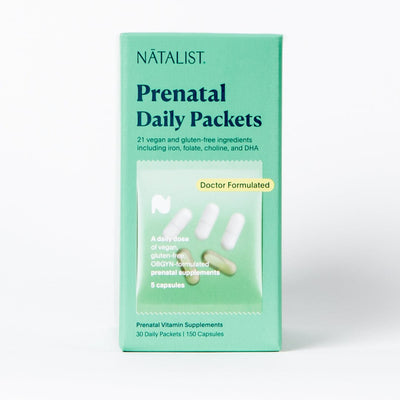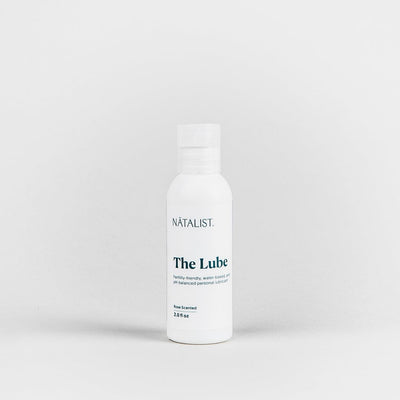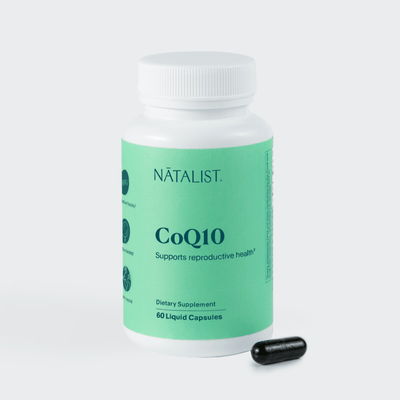Forever Chemicals and How They Impact Fertility

By Dr. Kenosha Gleaton, OBGYN
What are forever chemicals?
Per- and polyfluoroalkyl substances (PFAS) are chemicals used to make coatings and products such as clothing, food packaging, furniture, insulation, and non-stick or heat-resistance cooking surfaces. [1] PFAS are useful for resisting heat, oil, grease, water, and stains. Data shows that these chemicals do cause some health and environmental concerns and remain in the environment for an unknown amount of time, coining the name “forever chemicals”. [2-3] There are over 9,000 known PFAS that have been identified and this number is expected to continue growing. [3]
Exposure to PFAS
A report suggests that PFAS can be found in the blood of 97% of Americans. [3] Humans are exposed to PFAS through contaminated air, water, and food as well as using products made with PFAS. [3] Geography and occupation can also increase the risk of exposure to PFAS. [3] We have reason to believe that blood levels of PFOS and PFOA have reduced since their removal from many consumer products in the early 2000s. [3] While this is positive news, there have been hundreds of new PFAS chemicals created and used since that still need to be researched. [3]
PFAS and the environment
The widespread use of PFAS in industry and consumer products for decades is now causing concern amongst many governmental and environmental agencies. Even though PFAS have been used for over 70 years, the damaging effects of these chemicals was kept under wraps until 2001, when chemicals were found in the drinking water of thousands of people near a production plant. [4-5] After this discovery, research into the effects of PFAS took off, giving us some of the information we have today.
Data shows that many PFAS substances, such as perfluorooctane sulfonic acid (PFOS) and perfluorooctanoic acid (PFOA) do not break down in the environment, build up in fish and wildlife, and can be passed through soil to contaminate drinking water. [1] PFAS have already been found in many bodies of water and wildlife, and research suggests that PFAS can be found in nearly everyone in the United States. [1,3]
The health effects of forever chemicals
The data that we do have on PFAS shows associations between exposure and various health effects. [1,6] It’s worth noting that research has only been done on a small number of chemicals, such as PFOS and PFOA, and there are still hundreds of other PFAS that are lacking data. [1] Research shows that exposure to specific PFAS may be associated with altered immune and thyroid function, liver disease, kidney disease, cancer, altered metabolism, increased risk of obesity, adverse reproductive and developmental outcomes, and more. [3,6]
PFAS and fertility
More research is still needed to understand the full scope of PFAS levels and their impact on fertility. A recent study conducted in Singapore found that women with higher than average levels of PFAS in their blood had a 40% lower chance of conceiving within a year. [7] Increased levels of PFAS were also associated with a lower chance of having a live birth within a year. [7]
A separate study found that exposure to some PFAS may have negative effects on male reproductive outcomes. [8] PFOS and PFOA have endocrine-disrupting properties, impacting many vital reproductive hormone levels, including estrogen, testosterone, luteinizing hormone, and others. [8]
Other chemicals and fertility
PFAS aren’t the only chemicals that can negatively impact fertility. Other commonly used chemicals such as bisphenol A (BPA), parabens, and phthalates are found in cosmetics, food, packaging, and more. Studies show that exposure to some of these chemicals may cause irregular menstrual cycles, altered hormone levels, increased chance of miscarriage, endometriosis, implantation failure, and diminished egg quality. [9-14] Read more about parabens and fertility. →
How to reduce exposure to PFAS
It can be difficult to completely avoid exposure to PFAS as thousands of chemicals are still being used in production across the United States and other countries. [1-4] Fortunately there are a few things you can do to try and limit your exposure. [15]
Decrease use of products containing PFAS
There are some specific chemicals or names associated with PFAS that you may be able to spot on product labels or product descriptions, such as [16]:
- Fluoro
- Perfluoro
- Stain-resistant, dirt-resistant, or grease-resistant products or treatments
- Water-resistant products or treatments
- Non-stick cookware, products, or treatments
While not all products with this labeling contain PFAS, it’s recommended that you proceed with caution and reach out to the manufacturer for more information. [15]
Pay attention to what you’re consuming
Unfortunately, not all states have standards for PFAS levels in public water systems. [15] If you’re concerned about the water you’re drinking, you can try to get more information from your state environment protection agency or health department. Some in-home water treatments or filters, such as activated carbon, high pressure membranes, and ion exchange may be able to lower the levels of PFAS in water. [17]
Foods that come in grease-repellent packaging (microwave popcorn bags, fast food wrappers, etc) or cooked using non-stick cookware may be at risk of containing higher levels of PFAS. [16] You should also avoid eating potentially contaminated fish. The EPA has a list of contacts you can reach out to for information about waterways in your area.
Support your fertility
It can be scary to read about all the things that can go wrong or cause bumps in your fertility journey. There are so many factors that impact someone’s ability to conceive, and it’s often difficult to pinpoint exactly what could be causing infertility. When it comes to “forever chemicals”, BPA, parabens, and other chemicals, we don’t always have control over what we’re exposed to. You should speak to your healthcare provider if you have any concerns or questions related to your fertility or reproductive health. Attempt to limit consumption or use of any foods or products that may increase your exposure to toxic chemicals. You can also support your fertility by maintaining a healthy weight, eating a balanced diet, and avoiding the use of drugs or alcohol. [18] Shop Natalist products to support your fertility and family planning journey or read more about fertility on the Natalist blog.
References:
- Per- and Polyfluorinated Substances (PFAS) Factsheet. Centers for Disease Control and Prevention. May 2 2022. URL.
- What are PFAS chemicals? Environmental Working Group. Accessed May 2023. URL.
- Perfluoroalkyl and Polyfluoroalkyl Substances (PFAS). The National Institute of Environmental Health Sciences. May 09 2023. URL.
- Per- and polyfluoroalkyl substances (PFAS). National Institute for Occupational Safety and Health. September 15 2022. URL.
- Sisk, T. A lasting legacy: DuPont, C8 contamination and the community of Parkersburg left to grapple with the consequences. Environmental Health News. January 07 2020.
- Fenton SE, Ducatman A, Boobis A, et al. Per- and Polyfluoroalkyl Substance Toxicity and Human Health Review: Current State of Knowledge and Strategies for Informing Future Research. Environ Toxicol Chem. 2021;40(3):606-630. doi:10.1002/etc.4890
- Cohen NJ, Yao M, Midya V, et al. Exposure to perfluoroalkyl substances and women's fertility outcomes in a Singaporean population-based preconception cohort. Sci Total Environ. 2023;873:162267. doi:10.1016/j.scitotenv.2023.162267
- Tarapore P, Ouyang B. Perfluoroalkyl Chemicals and Male Reproductive Health: Do PFOA and PFOS Increase Risk for Male Infertility?. Int J Environ Res Public Health. 2021;18(7):3794. Published 2021 Apr 5. doi:10.3390/ijerph18073794
- Anne Marie Jukic, Antonia M. Calafat, D. Robert McConnaughey, et al. 2016. Urinary Concentrations of Phthalate Metabolites and Bisphenol A and Associations with Follicular-Phase Length, Luteal-Phase Length, Fecundability, and Early Pregnancy Loss. Environmental Health Perspectives 124:3 CID: https://doi.org/10.1289/ehp.1408164
- Koeppe ES, Ferguson KK, Colacino JA, Meeker JD. Relationship between urinary triclosan and paraben concentrations and serum thyroid measures in NHANES 2007-2008. Sci Total Environ. 2013;445-446:299-305. doi:10.1016/j.scitotenv.2012.12.052
- Lathi RB, Liebert CA, Brookfield KF, et al. Conjugated bisphenol A in maternal serum in relation to miscarriage risk. Fertil Steril. 2014;102(1):123-128. doi:10.1016/j.fertnstert.2014.03.024
- Buck Louis GM, Peterson CM, Chen Z, et al. Bisphenol A and phthalates and endometriosis: the Endometriosis: Natural History, Diagnosis and Outcomes Study. Fertil Steril. 2013;100(1):162-9.e92. doi:10.1016/j.fertnstert.2013.03.026
- Shelley Ehrlich, Paige L. Williams, Stacey A. Missmer, et al. 2012. Urinary Bisphenol A Concentrations and Implantation Failure among Women Undergoing in Vitro Fertilization. Environmental Health Perspectives 120:7 CID: https://doi.org/10.1289/ehp.1104307
- Machtinger R, Orvieto R. Bisphenol A, oocyte maturation, implantation, and IVF outcome: review of animal and human data. Reprod Biomed Online. 2014;29(4):404-410. doi:10.1016/j.rbmo.2014.06.013
- Meaningful and Achievable Steps You Can Take to Reduce Your Risk. United States Environmental Protection Agency. August 18 2022. URL.
- PFAS Health Effects & Ways to Reduce Exposure. Public Health Madison & Dane County. URL. Accessed May 2023.
- Reducing PFAS in Drinking Water with Treatment Technologies. United States Environmental Protection Agency. August 23 2018. URL.
- Treating Infertility. American College of Obstetricians and Gynecologists. FAQ137. August 2022. URL. Accessed May 2023.
Sign Up For 10% Off Your First Order!
Sign up for insider access, exclusive deals, and OBGYN insights!
Reach Out, We're Here
Have questions about your order or products? For the speediest answer, check out our FAQ section. Need something else? Come find us below.
Customer Support
support@natalist.com
Press Inquiries
media@everlyhealth.com
Business & Partnerships
team@natalist.com
Affiliates + Influencers
team@natalist.com
Job Openings
Careers Page






















